hi every one
i’m using abaqus 2017
and i want to implement Hypo-sand to my Biaxial model (2D)
and before all, i linked abaqus and fortran successfully
my question is that my abaqus version is suitable for subroutine؟
or i have to change my abaqus version?
abaqus version
Related Articles
-
Animating Soil Models – eLearning Project
 Gertraud Medicus||Constitutive Modelling|0 |Views 5,028
Gertraud Medicus||Constitutive Modelling|0 |Views 5,028
Dear all, I am currently writing a proposal for a (small & hopefully nice) eLearning project: Within the project, I would like to create animations related to constitutive modelling. I […] -
SImulation with hypoplastic model for granular materials in ABAQUS
 yusheng yang||Constitutive Modelling|2 |Views 4,388
yusheng yang||Constitutive Modelling|2 |Views 4,388
Hello, I want to use the hypoplastic model for granular materials downloaded from https://soilmodels.com/download/plaxis-umat-hypoplas-zip. The UMAT file umat.for is the model for sand. I followed the instruction https://web.natur.cuni.cz/uhigug/masin/plaxumat/node5.html. I have […] -
Htypoplastic Model in Miidas GTS NX
 Kassem Dib||Constitutive Modelling|6 |Views 2,297
Kassem Dib||Constitutive Modelling|6 |Views 2,297
Hello.. I am defining the hypoplastic parameters for Karlsruhe sand (found in a paper) using MIDAS GTS NX. In the software the a requesting (in addition of parameters) the number […] -
UMAT Code for Clay Hypoplasticity
 Shen Wang||Constitutive Modelling|5 |Views 4,485
Shen Wang||Constitutive Modelling|5 |Views 4,485
Hello Everyone, I am using the UMAT code for clay hypoplasticity provided by Prof. Masin — https://soilmodels.com/download/plaxis-umat-hypoplas-zip/ I made a oedometeric test model in Abaqus2018 and applied the umat code […] -
Problem in using Hypoplastic model for sand in Abaqus.
 isma khabis||Constitutive Modelling|16 |Views 1,912
isma khabis||Constitutive Modelling|16 |Views 1,912
Hello, I am using the UMAT code for sand hypoplasticity provided by Prof. Masin — https://soilmodels.com/download/plaxis-umat-hypoplas-zip/. I am simulating Axisymmetric condition in Abaqus. To check the results given by the […] -
Issues in getting the negative values of q (mean deviatoric stress) while simulating cyclic triaxial test in ABAQUS using SANISAND subroutine.
 MOHD SAQIB||Constitutive Modelling|5 |Views 4,316
MOHD SAQIB||Constitutive Modelling|5 |Views 4,316
Hello Everyone, I have been trying to simulate the cyclic triaxial test using the SANISAND04 subroutine. When I plotting the stress path (p-q plot), I am getting only the positive […] -
CONSTUTUTIVE MODELLING
 MOHD SAQIB||Constitutive Modelling|0 |Views 4,461
MOHD SAQIB||Constitutive Modelling|0 |Views 4,461
Can SANISAND version given in soil model work well for cyclic simple shear test ? -
Effects of water content in sand in hypoplastic strength parameters
 Abdiel Ramon Leon Bal||Constitutive Modelling|0 |Views 3,830
Abdiel Ramon Leon Bal||Constitutive Modelling|0 |Views 3,830
Dear All, I am currently using the hypoplastic model for gran materials from Prof. von Wolffersdorff to simulate soil excavations in a context of large deformations. I have been searching […]
Who is Online
No one is online right now
Search SoilModels Website
Recent posts
-
 Paper of Coulomb, C. A. (1773) 15.4.2024
Paper of Coulomb, C. A. (1773) 15.4.2024
-
 ABAQUS UMAT of hypoplastic clay model 6.4.2024
ABAQUS UMAT of hypoplastic clay model 6.4.2024
-
 Prague Geotechnical Days 2024 “Geotechnical monitoring” and 30th jubilee Prague Geotechnical Lecture by prof. Eduardo Alonso 5.4.2024
Prague Geotechnical Days 2024 “Geotechnical monitoring” and 30th jubilee Prague Geotechnical Lecture by prof. Eduardo Alonso 5.4.2024
-
 UMAT for Creep-SCLAY model. 1.3.2024
UMAT for Creep-SCLAY model. 1.3.2024
-
 Cyclic tests with Triax element test driver 14.2.2024
Cyclic tests with Triax element test driver 14.2.2024
-
 SUMMER SCHOOL ‘Numerical Modelling in Geotechnical Engineering’, Innsbruck – July 22nd-26th, 2024 1.2.2024
SUMMER SCHOOL ‘Numerical Modelling in Geotechnical Engineering’, Innsbruck – July 22nd-26th, 2024 1.2.2024
-
 COURSE IN SOIL MODELING – NTNU, Trondheim – October 14th to 18th, 2024 21.12.2023
COURSE IN SOIL MODELING – NTNU, Trondheim – October 14th to 18th, 2024 21.12.2023
-
 MSE walls design in Plaxis 11.12.2023
MSE walls design in Plaxis 11.12.2023
-
 sand liquefaction modelling in Anura3D 8.12.2023
sand liquefaction modelling in Anura3D 8.12.2023
-
 BCV bentonite experimental and modelling datasets 14.11.2023
BCV bentonite experimental and modelling datasets 14.11.2023
-
 Challenges in simulating geomechanical models using Mohr-Coulomb with Tension Cut-Off in Abaqus 20.10.2023
Challenges in simulating geomechanical models using Mohr-Coulomb with Tension Cut-Off in Abaqus 20.10.2023
-
 Analys soil liquefaction with Abaqus under blast load 19.10.2023
Analys soil liquefaction with Abaqus under blast load 19.10.2023
Recent Comments
- Gertraud Medicus on ABAQUS UMAT of hypoplastic clay model
- Chen Zhiming on Download Package of Charles University Implementation of High Cycle Accumulation Model
- Konstantinos Chatzis on Cyclic tests with Triax element test driver
- Abhay Pratap Singh on Cyclic tests with Triax element test driver
- Giovanni Ciardi on Cyclic tests with Triax element test driver
- Konstantinos Chatzis on Cyclic tests with Triax element test driver
- Ismail Khan on Cyclic tests with Triax element test driver
- Kanika Lamba on Cyclic tests with Triax element test driver
- Arie Koot on How to model the settlement in soil due to water drawdown.
- Konstantinos Chatzis on Cyclic tests with Triax element test driver
- Jose Duque on Cyclic tests with Triax element test driver
- MohamadReza Kamali on How to model the settlement in soil due to water drawdown.
- Leo Alibert on MSE walls design in Plaxis
- Ignacio Zuloaga on MSE walls design in Plaxis
- Giada Orlando on Problem with VUMAT interface
- Michael Spyridis on Problem with VUMAT interface
- Ahmad Moeineddin on Problem with VUMAT interface
- Nikolay Suyo Calla on Hardening soil Model UMAT

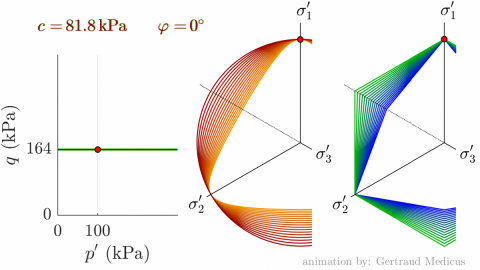

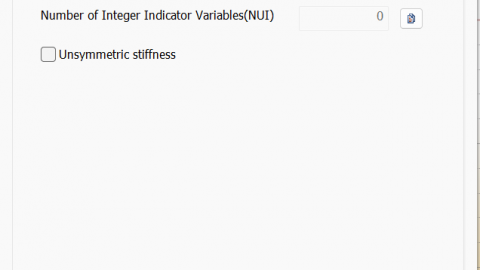
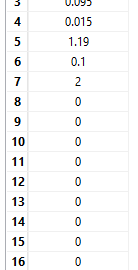
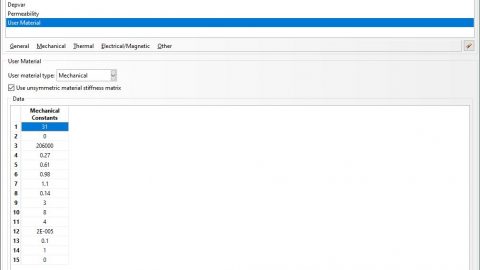
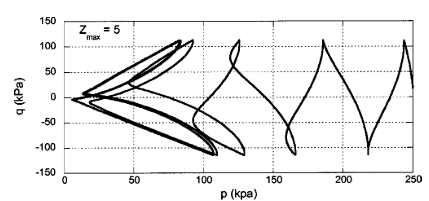

Hi Sobhan,
If you have succesfully linked Intel Fortran Compiler and MS Visual Studio to your Abaqus 2017 version and have “PASSED” messages when doing the verifications, then you should be able to run the UMAT in your analyses, irrespective of the version of Abaqus.
thank you so much!
Usually it is never an issue with the Abaqus version. The only thing that happens from time to time is that they slightly change the names of the variables in the header of the subroutines. But this I have so far only seen for some not really common subroutines. For UMATs it is not the issue for the last years/versions.